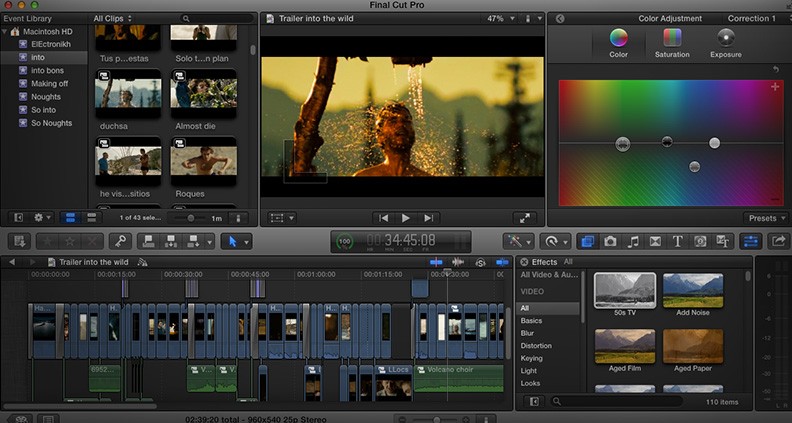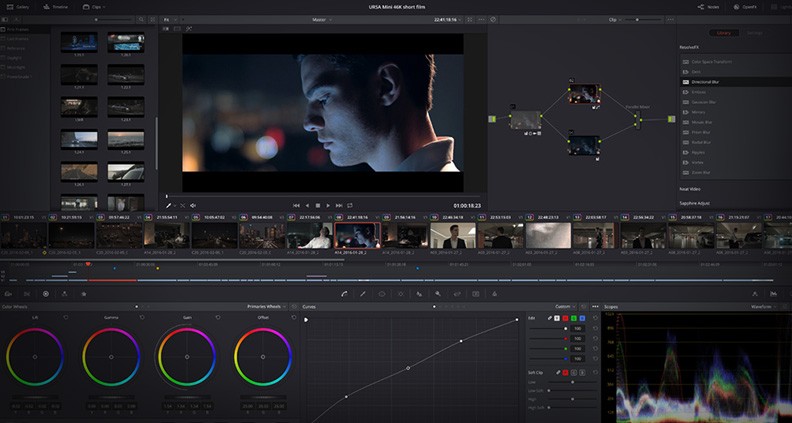TARNATION
At the Sundance Film Festival in 2004, Apple had a booth set up in the event’s digital media center. The reps in there had a white board, and would ask filmmakers for the name of their movie and if they had edited in Final Cut Pro. It was sort of like a badge of honor—your film (which was now playing at Sundance) had been cut on a G4 tower in your apartment, using this awesome new tool from Apple. Somehow, cutting on a piece of software you bought from Newegg was a stand against the entrenched big-iron post industry. Then something truly poetic happened: that year, Tarnation—a feature-length documentary cut entirely on the lowly iMovie app—screened in the Frontier section to universal acclaim. The film, directed by Jonathan Caouette, went on to screen at Cannes. Apple “amateur” had outflanked Apple “professional.” And it was a signal of where things were heading. In 2007, Apple made the decision to end what at the time was the #1 NLE (non-linear editing) platform in the world: Final Cut Pro Studio 7, a platform that had millions of active users. It was the workhorse for tens of thousands of small and large post-production facilities worldwide. Rather than continuing to develop the application as a product for post-production pros, Apple released an entirely new editing platform called Final Cut Pro X. This was not an update to the existing software product, but a brand new application with a new code base—a code base it shared with the free, bundled app iMovie, the much maligned editorial step sibling of FCP. When FCPX shipped, it lacked support for machine control. So there was no way to work with videotape decks (still in use in 2007), along with dozens of other run-of-the-mill features FCS7 included. Further, the ecosystem of third-party plug-ins that worked just fine in FCS7 just didn’t work in FCPX. And it cost 300 dollars. Reactions were negative, angry and often hostile. Professionals jumped shipped and went back to Avid. Others jumped into the Adobe CC ecosystem, working to make Premiere operate like FCS7. Others patched existing systems together, steadfastly continuing to make FCS7 work as the world changed around it, even after Apple had abandoned it altogether. It wasn’t that Apple had abandoned video editing. It had instead discovered this: that most people editing videos weren’t—and would never be—professional video editors. And while the user base of Final Cut Pro may have numbered in the millions, iMovie was installed on every Mac in the world.
YOUTUBE AND “USER GENERATED” CONTENT
In 2005 the website YouTube went live, allowing anyone, anywhere to post a video. This was not the first website to allow users to show or upload videos. Since the late ‘90s, there had been a bunch of different methods for getting video online, but the bandwidth necessary for watching streaming video wasn’t there yet. YouTube started up right around the same time as broadband video connections (mostly DSL) had reached enough homes for uploading and streaming video to take hold. Most importantly, there was no curator and no selection process. There was some monitoring of offensive material, but not much copyright enforcement. By 2006 YouTube was the fastest growing website on the internet, and the content being uploaded wasn’t often what most film festival programmers would consider “art.” It was a lot of young people making and posting videos for one another, or posting clips from their favorite TV shows, movies and music videos, with no regard for copyright holders. YouTube became the collective unconscious for teenagers, the place they went to create and watch videos; filmmaking was not being done by just filmmakers anymore. The line between producer and audience disappeared, and no one had the time or need to learn a complicated video editing program. Soon, the vast majority of motion picture content in the world was being made in bedrooms and dorms on whatever free application was already loaded on to the user’s computer. And a lot of media wasn’t edited at all—just captured with a camera phone and uploaded to YouTube. The explosion of content was so vast that it spawned an industry of aggregator sites—curators that would select subsets of the video pouring on to the web for niche audiences, places like WorldStarHipHop.
BLACKMAGIC DESIGN DAVINCI RESOLVE
By 2010, the value of high-end, boutique post solutions took another hit when BlackMagic Design released DaVinci Resolve, a color grading software suite, for $995. The package previously cost close to $100K and came with hardware and service agreements. Resolve has evolved over the last decade, adding an integrated NLE and audio mixing tools to its already robust color-grading suite—all for the low, low price of free. The studio version, which adds a few more tools, costs $300. So now the price for professional, high-end, editing and post tools hovers somewhere between $0-$300. Cool, right? But how, exactly, does this work? BlackMagic sells hardware, not software. Everything from colorciter control panels, audio mixing consoles, video I/O, cameras and production gear. Some of that hardware will only work with Resolve. Some works better with it, while remaining compatible with other gear. FCPX only runs on Apple hardware, continuing the company’s longstanding tradition of a closed-loop ecosystems. Meanwhile, AVID has jumped into the free software fray with Media Composer First. Adobe CC offers a per-month or per-year rental of its digital suite on multiple OS’s and platforms. But Adobe stopped being a software-only company years ago. Adobe is a marketing and data analytics company now, with that service generating at least half the income for the company. That’s the punchline—the end to this nearly three-decade journey from hundred thousand dollar machines to free and cheap software. The developers of these tools want you, the end user, fully in their camp. There, you either will buy expensive hardware or offer data they can mine to sell to marketers. And if you do neither and just use the free software on old gear, they’ll be there if you ever need or want to make the leap to a old school, professional post house. It doesn’t cost them anything to offer free software to everyone if, in the end, they get loyal paying professionals willing to pony up for the really cool stuff. Learn more about the evolution of filmmaking tech, including where we might be headed next, by checking out more of Eric Escobar’s Hacking Film series. To learn how to become a Member of Film Independent just click here.



